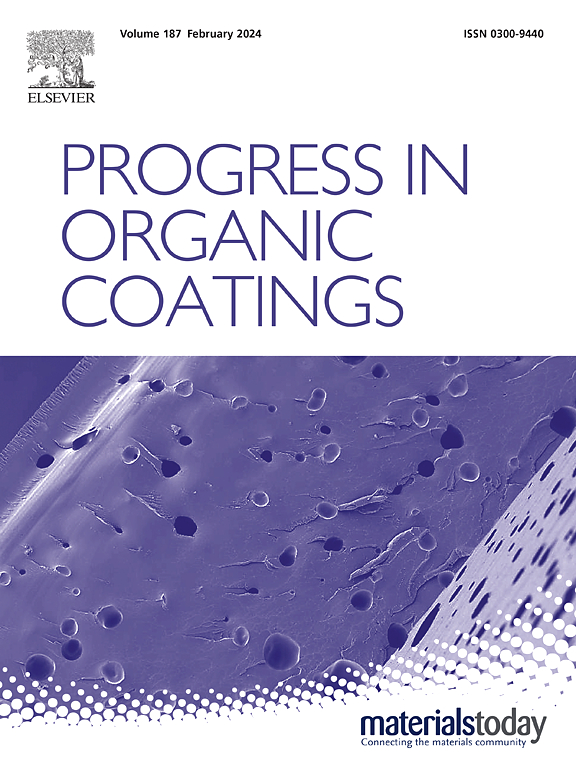Triple-synergistic anti-corrosion nanocapsules: Empowering coatings with outstanding corrosion resistance
IF 6.5
2区 材料科学
Q1 CHEMISTRY, APPLIED
引用次数: 0
Abstract
Metal-organic frameworks (MOFs) provide significant benefits for loading metal corrosion inhibitors in anticorrosion on account of their high specific surface area and porous structure. Here, we present a novel BTA@Ce-ZIF-8 nanocapsule that exhibits pH-responsive behavior. Ce3+ and Zn2+ in the nanocapsule structure are common cathodic inhibitors, which can work in conjunction with the loaded metal corrosion inhibitor (benzotriazole) BTA to attain a triple anti-corrosion function. Q235 carbon steel is a common carbon structural steel, widely used in construction, bridges and other fields. The substrate used in this experiment is Q235 carbon steel. The incorporation of nanocapsules into the coating can impart self-repairing properties, as well as enhance its resistance to corrosion. The doping of Ce3+ proved effective in improving the poor dispersion of ZIF-8, as evidenced by scanning electron microscope images. Furthermore, BTA@Ce-ZIF-8 nanocapsules exhibited the highest rate of corrosion inhibitor release under acidic conditions, as demonstrated by UV tests. The BTA loading capacity was approximately 6.9 wt%. After 30 days of soaking, electrochemical impedance spectroscopy (EIS) measurements revealed that the impedance modulus for the 2 wt% BTA@Ce-ZIF-8/EP scratch coating reached 5.30 × 103 Ω·cm2, significantly higher than that of the pure EP. For scratch-free coatings with 2 wt% BTA@Ce-ZIF-8 nanocapsules, the impedance modulus remained above 108 Ω·cm2 after 50 days of immersion, showing remarkable self-repairing capabilities and corrosion resistance.

求助全文
约1分钟内获得全文
求助全文
来源期刊

Progress in Organic Coatings
工程技术-材料科学:膜
CiteScore
11.40
自引率
15.20%
发文量
577
审稿时长
48 days
期刊介绍:
The aim of this international journal is to analyse and publicise the progress and current state of knowledge in the field of organic coatings and related materials. The Editors and the Editorial Board members will solicit both review and research papers from academic and industrial scientists who are actively engaged in research and development or, in the case of review papers, have extensive experience in the subject to be reviewed. Unsolicited manuscripts will be accepted if they meet the journal''s requirements. The journal publishes papers dealing with such subjects as:
• Chemical, physical and technological properties of organic coatings and related materials
• Problems and methods of preparation, manufacture and application of these materials
• Performance, testing and analysis.
 求助内容:
求助内容: 应助结果提醒方式:
应助结果提醒方式:


